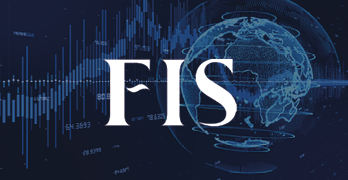FBX Index November: Looking forward

What was quite a unidirectional market through October was suddenly bucked on as we move over into November.
Overall, the market continues to be quite bearish, FBX11 China/East Asia to North Europe is down -66.41% as recession bites in Europe. However, as always, the pace of decline has been dramatically shallower than Transpacific.
The theme of the month has been the mix of a rapid drop in demand for capacity, and aggressive rescheduling of sailings away from Asia outbound routes to pick up higher-paying cargo on the Transatlantic routes. Overall, the market continues to be quite bearish, FBX11 China/East Asia to North Europe is down -66.41% as recession bites in Europe. However, as always, the pace of decline has been dramatically shallower than Transpacific. FBX01 (China/East Asia to North America West Coast) saw an 87.88% drop from market highs to 31 October, but very recently a bump of 22% in a single day from 31 October to 1 November has put some doubt into the direction of the market moving forward.
On futures it has become less a case of predicting where the market will go, and more a case of what value buyers will accept following the collapse of spot rates. On FBX01 Cal23 the offer level has pulled back all the way to $2,500, giving buyers an opportunity to lock in 2023 at relatively attractive levels.
On the Transpacific, carriers had blanked 1.5 million TEUs of sailings before October even started, with the pace of blanking picking up throughout the month. Until very recently, this has done little to stem the drop in rates which had reached a low on Index at $2,494 – anecdotally in the market physical rates reaching as low at $1,600 – so very much within the range of rates the market saw in 2019. However, the sudden reversal of rates on 1 November (which may well be a circumstantial blip as new tariffs come into the market) lends to some of the sentiment hitting the market, largely in the trade press, that rates are leaning towards normalisation. What this normalisation even means is contentious given the cost base for carriers is higher than it was in 2019 (primarily as a component of fuel and de-carbonization costs). On futures, it has become less a case of predicting where the market will go, and more a case of what value buyers will accept following the collapse of spot rates. On FBX01 Cal23 the offer level has pulled back all the way to $2,500, giving buyers an opportunity to lock in 2023 at relatively attractive levels.
On Asia to Europe, the market is still very much in flux. A result of the slower depreciation in spot rates, offer levels on the Cal23 dramatically shed value in reaction to new buyers on the futures indicating a buying ‘sweet spot’ between $3,000 and $4,000 per FEU. Closing in on this price also puts Asia-Europe container rates back into competition with dry bulk, particularly handysize vessels, which were used as a capacity backup during the very tight capacity market on containers in 2021.
Overlaying on the container market is a complete collapse on the time-charter market from highs last year, delayed by the collapse of spot rates. This combines with rumours of contract renegotiation both on the container capacity market and also on the time charter market – driving selling interest on container futures as a hedge against falling time-charter rates. Hopefully, all of this sets the stage for quite an exciting month for container futures in November.
About Peter Stallion, Head of Air and Containers, Freight Investor Services
Peter Stallion heads up the Air and Container Freight desks at FFA brokerage Freight Investor Services. He started his career in air freight chartering, and has a passion for emerging risk management markets and the logistics industry.
Receive monthly container market reports direct to your inbox.